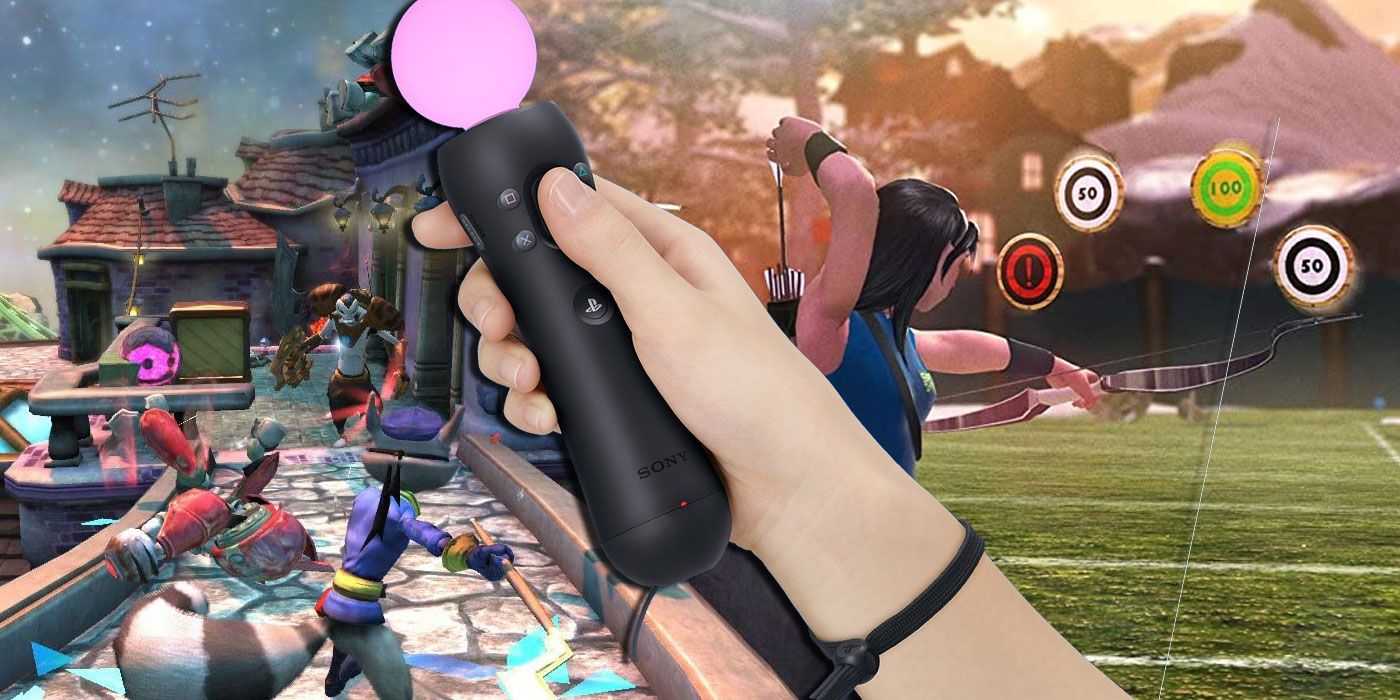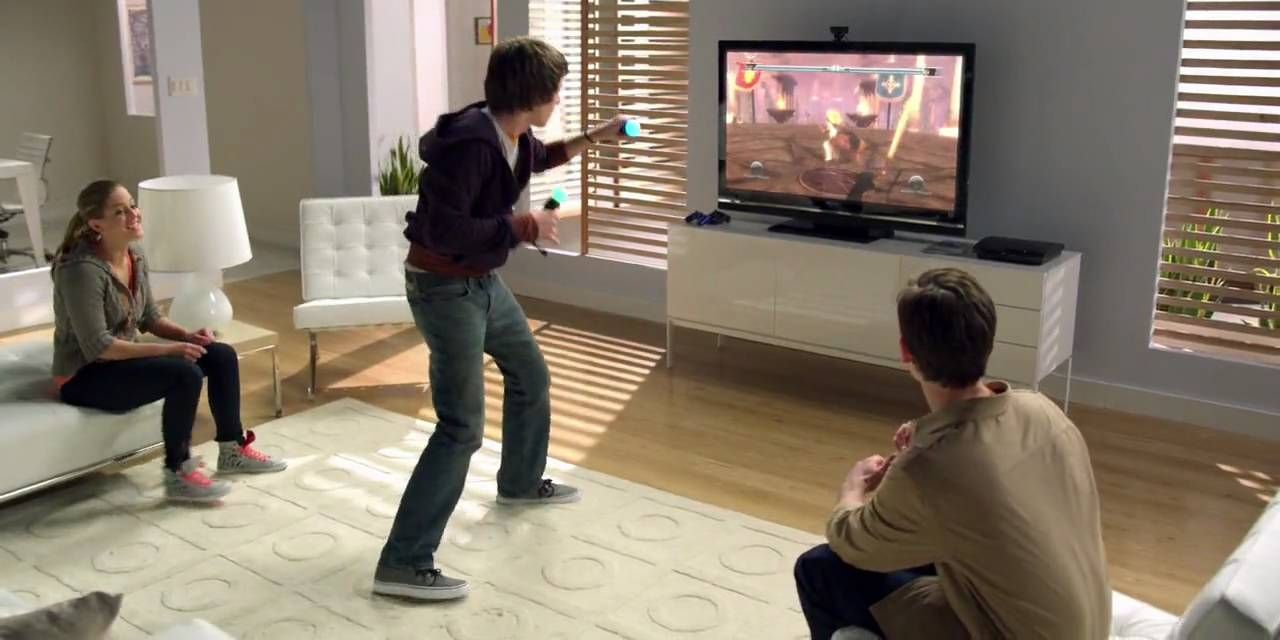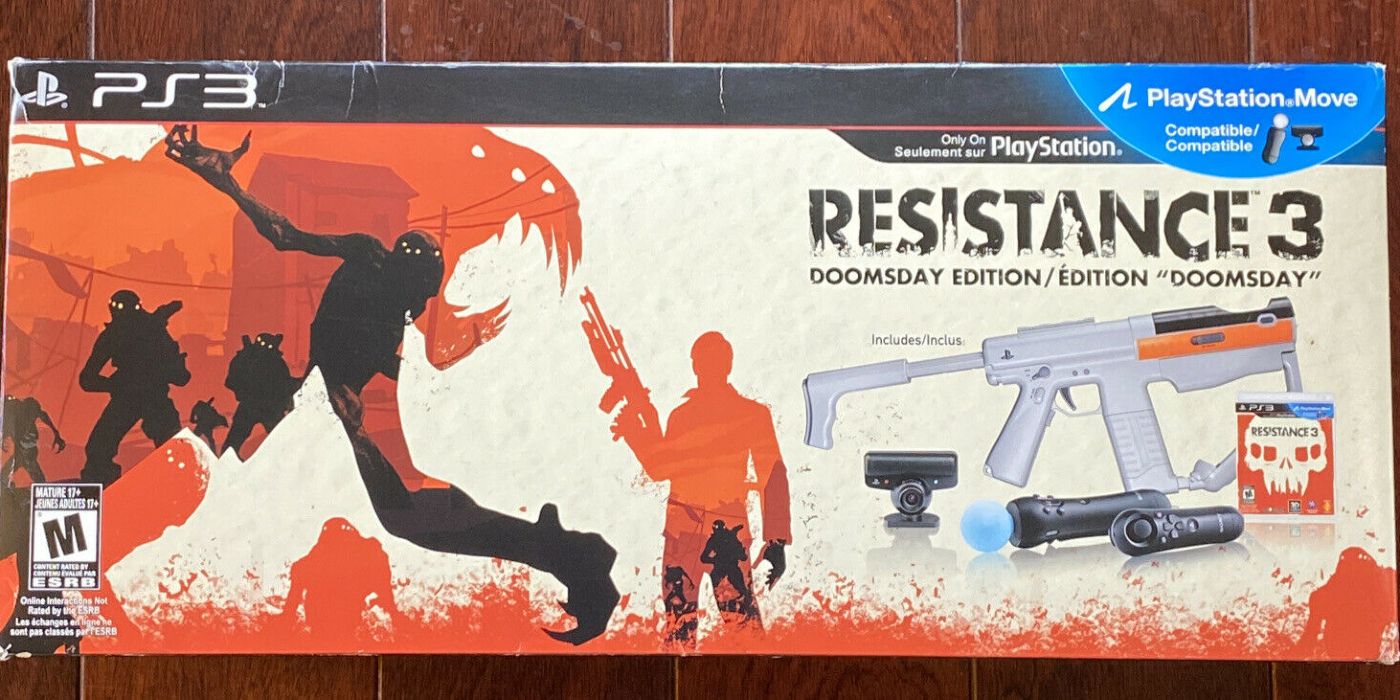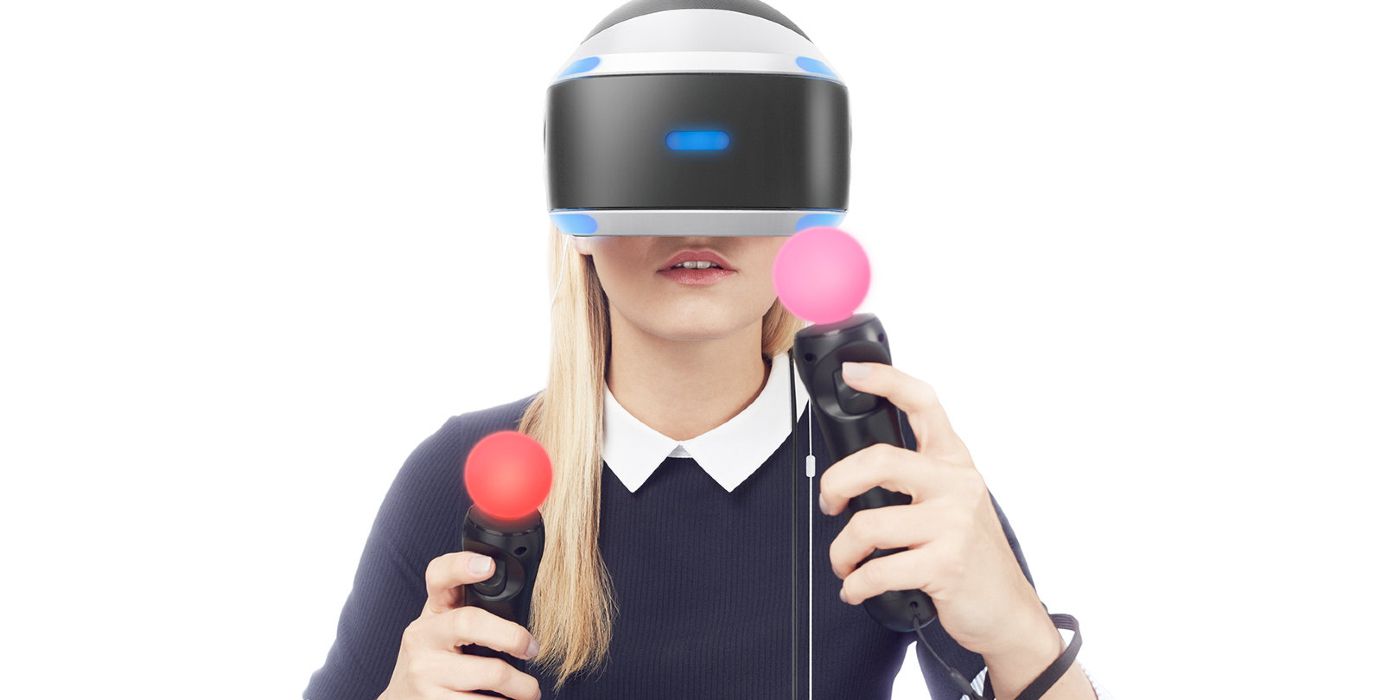
Sony's Playstation Move was the company's final attempt at a pre-VR motion gaming market. Sony's had an on-again, off-again history with motion gaming, periodically dipping into the market just long enough to get players excited about soon-to-released hardware. Sony's been doing this for years, dating all the way back to 2003's PlayStation 2 EyeToy. PlayStation Move might have suffered the same inevitable fate as nearly all Sony gaming peripherals, but Sony managed to rally this time, turning the PlayStation Move into something useful.
While it may have failed against competitors like Nintendo's Wii for a motion gaming set-up, the PlayStation Move found a second life through VR. Without the PlayStation Move, players might not have gotten the PlayStation VR when they did, or in the form they're familiar with. Sony would go on to incorporate the Move's motion controllers in their PlayStation VR; by using the comparatively inexpensive technology, Sony kept PlayStation VR as the most budget-friendly VR option.

The PlayStation Move originally started as the PlayStation Eye, a 2007 successor to the PS2's EyeToy camera accessory. In both cases, Sony used the device to explore how players could interact with games in different ways. Many titles used the cameras for basic movement tracking, audio and photo capture. After realizing the limitations of the accessory and watching the Wii skyrocket to motion gaming success, Sony began incorporating motion-tracking controllers and rebranding the hardware bundle as PlayStation Move.
Over its lifetime, PlayStation Move came in a few different variations depending on the current game Sony wanted to use to highlight its motion gaming option. Most notably, titles like Killzone 3 and Resistance 3 offered bundles that included a plastic controller grip shaped like a rifle. The PlayStation Move also offered additional accessories like a racing wheel players could use in conjuncture with their Move while playing games like LittleBigPlanet Karting or Gran Turismo 5. There were as many options as there were creative uses for the PlayStation Move, but despite some positive reception, it never dominated motion gaming the way Sony had hoped it might.

The problem with PlayStation Move was a two-part issue. For one, Sony has a well-documented history of creating new peripherals or accessories to complement their consoles and only supporting them for a few years before moving on to their next project. The recent PlayStation Store debacle on Sony's older consoles speaks to the problem. Sony doesn't handle aging products well. Once something's no longer a primary money-maker, the company does away with it in the quickest, cleanest manner possible, usually eliminating all support.
The other issue is that Sony's whole concept was always playing catch-up with Nintendo. Though critics were happy enough with the PlayStation Move, it lacked a vast library of exclusives or capitalization on iconic franchises, both things the Wii offered in spades. If players were interested in motion gaming, Wiis were relatively inexpensive and immediately had access to a massive library of games made with motion controls in mind. With PlayStation Move, players needed to purchase a PS3 plus a PlayStation Move bundle before searching for one of the few compatible games. Sometimes the Move accessories were bundled in with the system in a single package, but this was still hundreds more than a Wii. Nintendo definitively won the motion gaming war.

Though PlayStation Move didn't make the initial splash Sony desired, it got a second chance when PlayStation VR was released on the PS4. The Move motion controllers were the perfect option for Sony's new VR controllers, featuring large mo-cap bubbles atop each controller. They offered a win-win for players and Sony; those who'd bought into the PlayStation Move already had a piece of the set-up for VR, and Sony could remarket a withering accessory. It was a welcome departure from the days where Sony tried to reinvent the wheel at every turn, such as with the PSP's expensive proprietary memory cards.
The PlayStation Move was a triumph, but only insofar as it helped make PlayStation VR as successful as it was. Without Sony's last motion gaming attempt, PlayStation VR would likely have cost much more and taken longer to hit the scene. This would underscore its strengths and ultimately lead it down the familiar path to obsolescence Sony's peripherals tend to walk. PlayStation Move wasn't a financial success, but it was an instrumental step in Sony's experimentation.
0 Comments